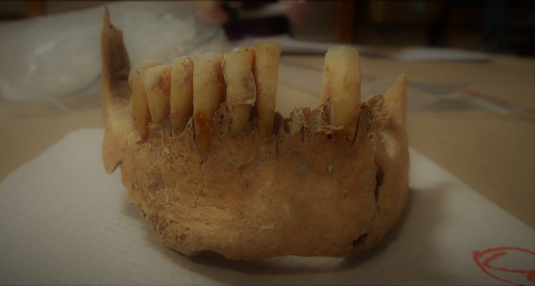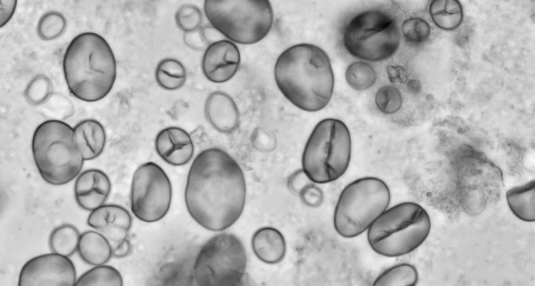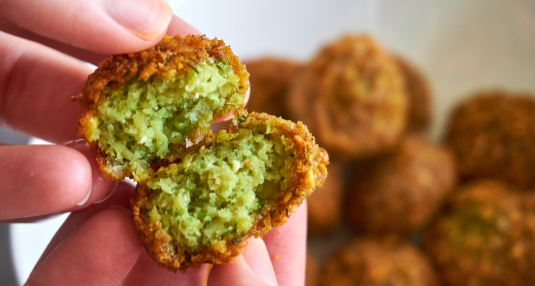PEKULI: Dietary practices in the Bronze Age and Iron Age Kumidi/Tell Kamid el-Loz, Lebanon
The aim of the PEKULI project is to reconstruct individuals diet through the analysis of plants microremains (starch granules and phytoliths) that got trapped in their dental calculus and to combine that with stable isotopes analysis (C, N) on the same individuals bone collagen), and previously produced bioarchaeological information.
The project is funded by: das Bundesministerium für Bildung und Forschung zur Fördermaßnahme (BMBF): Geistes- und Sozialwissenschaften im Förderbereich: Kleine Fächer - Große Potenziale.
Photo courtesy of S. Eisenmann and A. Mötsch
The skeletal remains to be studied in PEKULI project arrive from the large cemeteries excavated under the direction of Rolf Hachmann in the years 1966-1981. The collection is currently located at Göttingen University where it was studied by Prof. M. Schultz
Cicer sp. (chickpea) starch granules under plane-polarized light, X400 magnification, photo by S. Gur-Arieh
The dental calculus is analyzed to recover microscopic plant remains, especially starch granules and phytoliths (silicified plant cells), which are studied and compared to modern plant reference collections.
Falafel - a common contemporary middle eastern dish, Photo by @uniqueton on Unsplash
From the plant microremains, together with stable isotopes from the same individual bone collagen, we can learn about the role of plants in the diet of the site inhabitants, which would be almost invisible otherwise.




